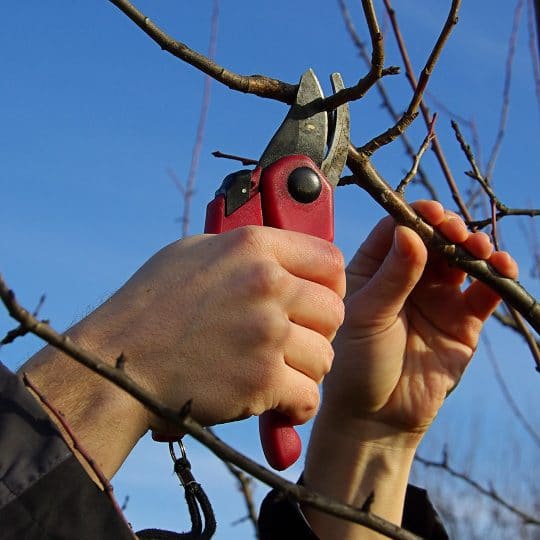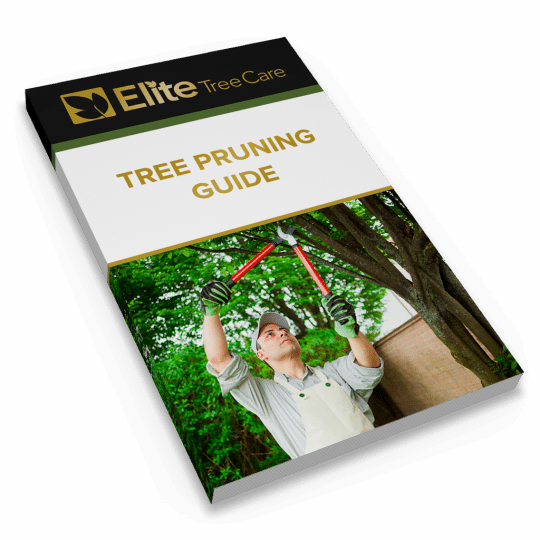Types of Tree Pruning Tools
And the Safe Way to Use Them
Posted
April 18, 2024

Now that late winter pruning is over, you may be getting ready for the next best time to prune. For plants that bloom in the spring, wait until their flowers fade to cut anything back. Be sure to use the right tool depending on whether you’re pruning a low shrub or taller tree. Here are some of the most common types of tree pruning tools and how to safely use each one.
Types of Tree Pruning Tools
Pruning is an important part of tree care because it helps maintain the health, shape, and overall appearance of your plants. However, when and how you prune can affect future growth. This is why it’s crucial to use the right tools and techniques to help ensure the job is done correctly and you don’t end up harming yourself or the plant.
- Pruning shear. These hand-held pruners are used for making precise cuts to small branches, twigs, and stems up to an inch thick. Bypass pruners have two blades that pass by each other. Anvil pruners have a single blade that cuts against a flat surface. Be careful not to crush the stem. Clean cuts help the plant heal quickly, preventing decay.
- Hedge shears. Long blades and handles make it easy to shape and trim thin branches of hedges and shrubs. Manual shears are easy to use for small tasks and powered shears are able to take on larger tasks.
- Lopper. Larger handles give these pruners more leverage for cutting thicker branches and stems up to two inches thick, depending on the lopper’s size and quality. They also come in bypass and anvil styles.
- Pruning saw. A sharp blade cuts through thick branches on the pull stroke. Folding saws are more convenient for carrying. Straight and curved saws are better suited for different cutting angles and branch sizes.
- Pole pruners. Extra long handles make it easier to reach high branches safely from the ground. A pruning head is mounted on the end of a long pole, which can be extended to reach branches high in the tree canopy. Manual designs require pulling a rope to close the cutting blade. Electric designs make it easier to cut thicker branches automatically.
Now that you’re familiar with the different families of pruning tools, there are tips to keep in mind for using them safely and effectively.
Tree Pruning Safety Tips
No matter what tool or plant you have, you can do more harm to yourself and the plant if you trim too much, too soon, too quickly. Help protect all living things with the following tips.
- Wear the proper shoes, clothing, safety goggles and gloves to protect yourself from debris and sharp tools.
- Stay off a ladder with any sharp object. If the branch is too high for a pole pruner, call a professional tree pruning service for help.
- Make a clean diagonal cut close to the branch collar to promote quick healing and water runoff to help reduce the risk of disease.
- Avoid over-pruning. You shouldn’t remove more than one third of the branches. Taking too much off at once can shock the plant, making it weak and more susceptible to disease and pests.
- Regularly clean and sharpen pruning tools to ensure they are in good working condition.
Just as regular pruning is important to the health of your plant, using the right type of pruning tools is essential for safety and efficiency. If you don’t have the right tools, need help reaching the tall branches, or just want to learn more about the proper way to prune, contact the tree care experts at Elite Tree Care for assistance.

Download Your FREE Tree Pruning Guide
Learn how, when, and how much to trim or prune your trees to maximize their health and beauty. This guide covers the factors that go into tree trimming (pruning) and will help you make a more informed decision about hiring a professional tree service.